The story of the past derives from documents and memory. These documents can be artifacts and phenomena such as the petrified thigh bone of a brontosaurus or the distinct geological layer of iridium that corresponds to the impact of a massive extraterrestrial object at the tip of the Yucatan peninsula some 65 million years ago. They can be scrolls in monasteries, film records of the first World War, or, in our case, comic books, original art, and the memory of a few individuals who were directly involved in the First Period of Canadian comics from 1941-46.
We use these documents to approximate and uncover an understanding of events and people in the past. This amounts to a sort of dialogue between the present and the past. We push against the arrow of time (entropy) and try to put the shattered teacup back together, as much as we can, from the shards we have available to us. In some instances, there are pieces we can’t find a proper space for or pieces that simply can’t be found at all.
I have been fortunate in having the luxury of retirement to examine the earliest phase of our Canadian comic book tradition and the additional luxury that the temporal gap between our present and that past is a relatively short one (coming on 80 years by 2021–another topic to write about, in itself). A handful of the people who were there on the front lines were still around to be interviewed when I began, and many of the comics, though now rare, have been preserved and are accessible in archives and private collections. Still, there remain a good number of missing shards or shards that don’t fit into that original Canadian wartime comic book teacup. I’d like to call attention to a few of them here that are related to the Toronto-based Anglo-American publishing company.
We all know that the first Canadian comic book, Better Comics Vol. 1 No. 1, came out with the cover date of March 1941 and that a tabloid-sized, pseudo-comic book, Robin Hood Comics Vol. 1 No. 1, came out with the same cover date. However, far fewer people know that Toronto’s Anglo-American also published a set of four black-and-white reprints of American Fox issues with that same cover date. Reprinted as facsimiles of the American issues, but with two-colour covers, were Big 3 Comics No. 2, Fantastic Comics No. 16, Mystery Men Comics No. 20, and Weird Comics No. 12 (Big 3 Comics No. 2 actually had no cover date, but the rest were all March 1941).
The trouble with this quartet was that the recent War Exchange Conservation Act that had stopped American comics from coming into Canada also forbade the straight reprinting of those American comics in Canada. So these issues were illegal, and maybe that explains why they were one-shots. However, why and how these books came about, and what Anglo-American was trying to do with them, (perhaps test the extent of the act?) is not understood or documented anywhere.
As to when these four reprinted books actually appeared on Canadian stands is another unanswered question. There is no publication date in the indicia. I very much doubt that they could have been on the stands at the same time as the first issues of Better Comics and Robin Hood Comics for two reasons. First, I don’t think Anglo-American could have made arrangements with Fox quickly enough in the very first months of Anglo’s formation to put out these reprints at the same time that they appeared on the stands in the U.S. Secondly, the issuing of all Canadian reprints of Golden Age American comics has always lagged the actual cover date of the American comics by a number of months, if not more than a year. I think it’s more likely that these books were reprinted and on Canadian stands, at least a few months after that March 1941 cover date and that Anglo-American produced these wholesale reprints without any concern for changing their cover dates. It would be great to find one or two copies with some sort of store stamp date on them to help with this mystery.
A couple of years later, in 1943, Anglo-American put out four giveaway mighty-midget type comics that mirrored four of the two-dozen or so issues that were published south of the border that same year. The four that Anglo-American chose to put out in Canada were Captain Marvel Jr., Bulletman, Ibis, and Golden Arrow. The American originals are on the left.
Size-wise, they are similar to the American issues measuring 5” X 3.75” and the Canadian issues measuring 4.75” X 4”. Both Canadian and American versions are unnumbered and have newsprint covers with the American covers closer to full colour and the cover-stock a little heavier, while the Canadian ones are two-toned with orange filler. The American versions are 36 pages (including covers) and the contents, though mostly in black-and-white, have a number of pages two-toned with red, while the Canadian versions are 32 pages (including covers) and have fully black-and-white interiors.
They raise a number of questions. Why did Anglo-American choose to put out the Ibis and Golden Arrow versions when the company already had their own stand-alone title for Spy Smasher and there was already a Spy Smasher American mighty midget counterpart? Perhaps the four issues they put out were assigned to them by their Fawcett source. In addition, how were these giveaways used by the company? Were they simply given away at newsstands or in movie theatres, or did Anglo-American use them in other promotional ways?
Comparing the American and Canadian versions of the Golden Arrow issues (which are the only ones I have), we see that the Canadian cover has been redrawn with the target of Golden Arrow’s shot a completely different figure. The lead-off story in the American issue is a reprint of the 20-page story from Golden Arrow No. 1 titled: “Golden Arrow and the Mystery of the Lost City” followed by a 13-page story about Golden Arrow’s encounter with a ghost.
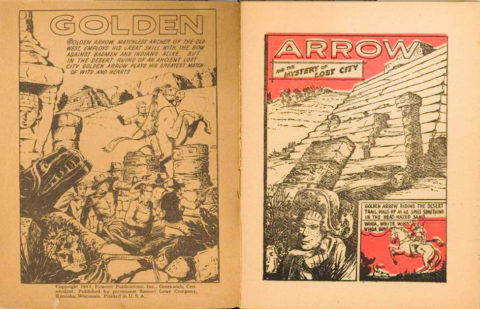
The Canadian issue has three redrawn stories and I can’t yet determine whether or not they are new stories or stories taken from the first dozen issues or so of the Anglo-American Whiz Comics series. Anglo-American female artist June Banfield has her name on the last of the splashes from these three stories:
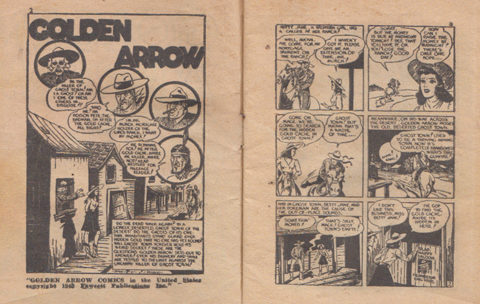
Looking at the two back covers, you can see that the American copies have a small “buy war bonds and stamps” mock stamp tucked into the upper left corner, while the back of the Canadian copies have a similar statement to “Buy War Savings Stamps” inserted into the top of a full-page ad for candies, seeds, on offer from a confectionery and grocery company still in existence, named Scott-Bathgate. The Canadian back cover also has a limited indicia just below that ad.
As for that Canadian ad, collector Jim Finlay has a copy of something that I think will have to be incorporated into the next edition of the WECA Price Guide. It’s called Snooper Goes Fishing. It is the same size as the Canadian mighty midget books and seems to be part of a series called “Fun in the Forest,” so there might be a handful of similar titles that could surface.
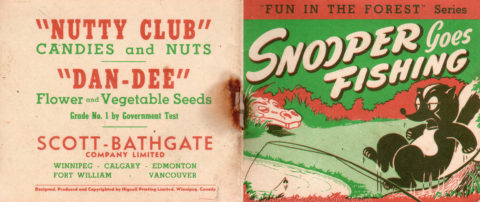
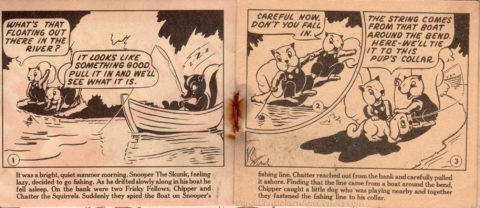
You can see that the ad on the back cover is just about identical to the Candian mighty midget back cover ads except for the addition of the Winnipeg printer, Hignell Printing, which is also still in existence today. How are we to understand this. Either Hignell printed all four of the Anglo mighty midget issues or Anglo printed them on their own as they did with all their comics and simply accepted the ad from Scott-Bathgate that Hignell had already mocked up. I tend to favour the latter explanation since it would probably have been cheaper for Anglo to print their own material rather than out-source it to a Winnipeg-based printer.
The next Anglo-American mystery isn’t one really. It is a mystery—yes, but it is only a pseudo-Anglo-American mystery. For all intents and purposes, the 1943 issue of Great Stories for Young Folks, with its toned orange and black-and-white newsprint cover and black-and-white interiors, looks and feels like an Anglo-American comic. However, it was published by the American company Parents’ Magazine Press, that same company which put out titles such as Real Heroes, Calling All Girls, True Aviation Picture Stories, and True Picture-Magazine.
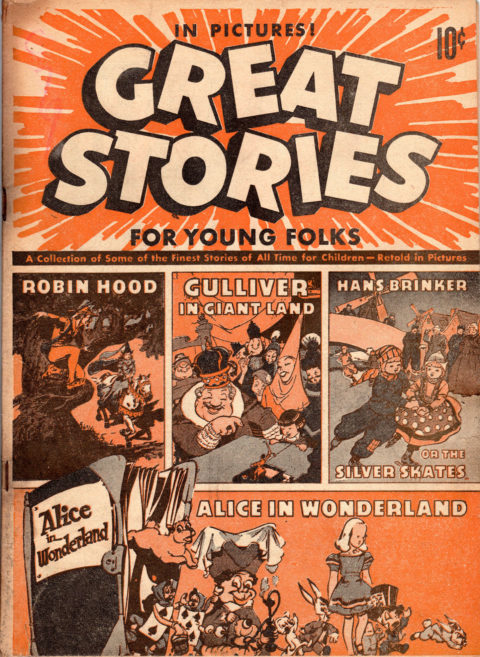
All of these were allowed through the WECA comic curtain and appeared on Canadian newsstands because they were deemed more educational and edifying than American fictional detective and superhero comics. In fact, True Picture-Magazine was a variant of True Comics made for and only available in Canada that emphasized its Canadian-related content on the cover. You can see ads for these titles on the back cover of this unnumbered issue.
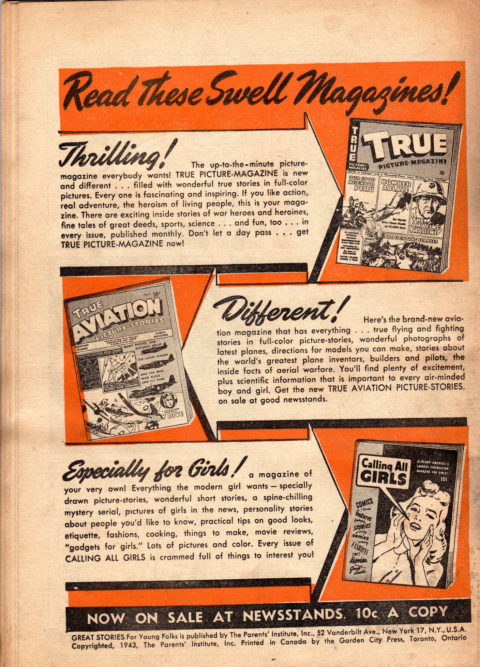
The thing with Great Stories for Young Folks was that the little bit of indicia it had on its back cover states that it was printed in Canada. But, why would the American parent company do that when American books like these, as with Gilberton’s Classic Comics, were readily being imported into Canada at this time? In addition, was this one-shot only distributed in Canada or was it also available in the U.S.? I hope we can find out more about this strange book in the future.
Next, we come to the Anglo-American giants/annuals. We know of three, all unnumbered and undated: Gift Comics, Holiday Comics Gift Book, and Christmas Gift Book Comics. These all contain unsold issues of Anglo product in a square-bound volume.
The Gift Comics seems to be the earliest given the fact that the cover depicts the main character such as Michael Lee, Pat the Air Cadet, and The Crusaders who still had prominence in Three Aces Comics and Grand Slam Comics just as the Fawcett characters were coming on board, so it probably came out in late 1942. Holiday Comics Gift Book contains issues from early 1943 so probably came out maybe around the summer of that year. Christmas Gift Book Comics contains issues from the late spring and early summer of 1943 and, as the title suggests came out for Christmas season 1943-4. Are there more of these issues that could surface?
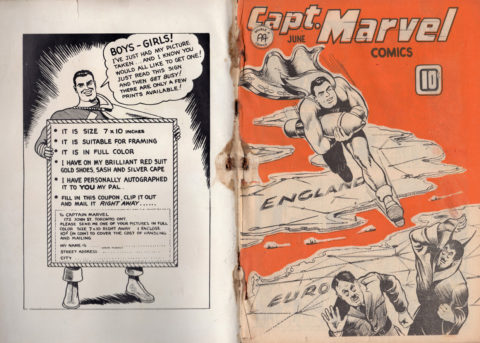
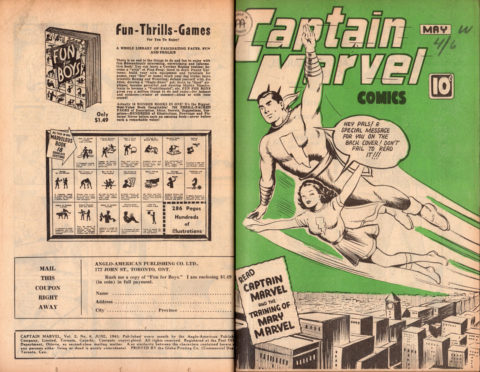
The inside back cover of Christmas Gift Book Comics displays an ad for a Comic Story Paint Book that has a Captain Marvel theme. The ad states that it reproduces a Captain Marvel story and Captain Marvel Jr. story with each panel reproduced twice. Once in full colour as a guide and once in black-and-white to be coloured. A copy of this still has to surface.
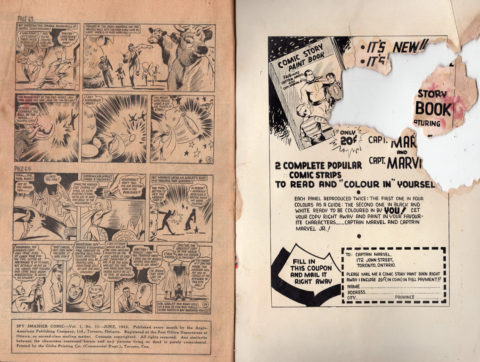
Another annual-type Anglo book that has to surface (if it was published at all) is the 128-page Red Rover Adventures. The only document of it we have is an ad on the back cover of the first full-colour Anglo book Grand Slam-Three Aces No. 44. Was it ever on the stands?
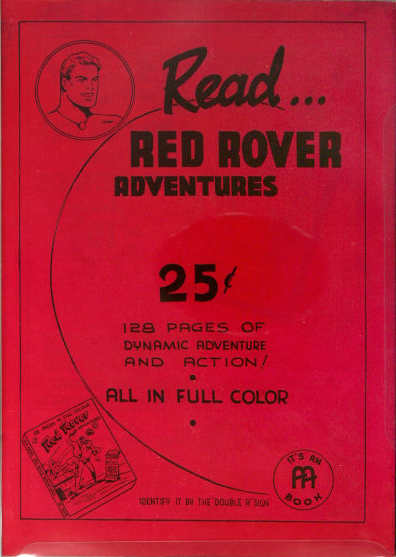
The last Anglo-related question I’d like to call attention to concerns the distribution of some of those colour Anglos in the U.S.
It certainly looks like copies of Grand Slam-Three Aces were distributed in the U.S. and maybe Fawcett had something to do with it. Here’s an American Captain Marvel Club Newsletter, issued just before the A-Bomb was dropped on Hiroshima, that calls attention to the fact that copies of Grand Slam-Three Aces were available on American newsstands.
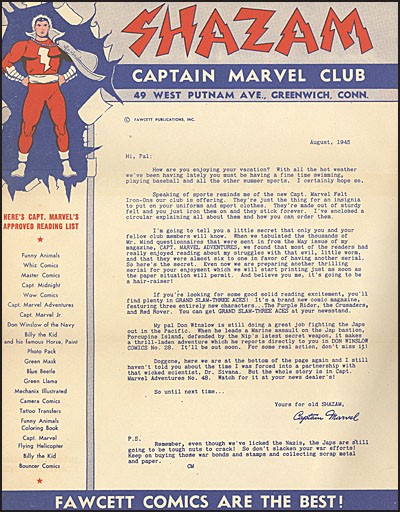
We need to find out how this came about and what the relationship between Anglo-American and Fawcett was in making this happen. Was this a limited distribution, say just in the north-east of the country or was it from coast to coast?
Is this distribution connected in any way with the printing of some of the later colour Anglos in Cleveland? Harlan Ellison recalls picking up copies of these books and enjoying them as a kid in Cleveland in his Foreword to John Bell’s 1986 book Canuck Comics. Check your later Anglo issues, those 1946 copies after the split back into the original titles. The American copies have covers whose colours are more sapped and minute-font indicia that give the Cleveland printing. We don’t know any of the story behind this? Wouldn’t it be great if a cache of these American issues, or even some file copies, were uncovered in some backdoor warehouse in Cleveland?
We may never sort any of this out, but I hope at least a few crumbs of information regarding some of these questions will fall our way and shed some light on the who, when, why, and how of them over the next few years.
NEWS
I’ll be at Alfonso Espinos’ Studiocomix Press in the Frederick Mall in Kitchener, along with Mel Taylor, on Saturday, November 2 to help celebrate the 2nd anniversary of Studiocomix. Come out and talk comics with us. I hope there’ll be cake.
Jim Finlay has turned up an issue No. 3 of Century’s Zor the Mighty which means another addition to a future update of our WECA Price Guide. Maybe it’s time to start planning for an update…?!
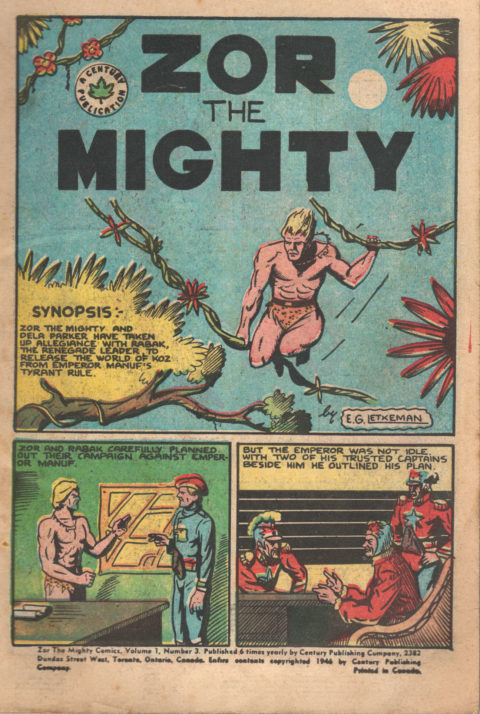

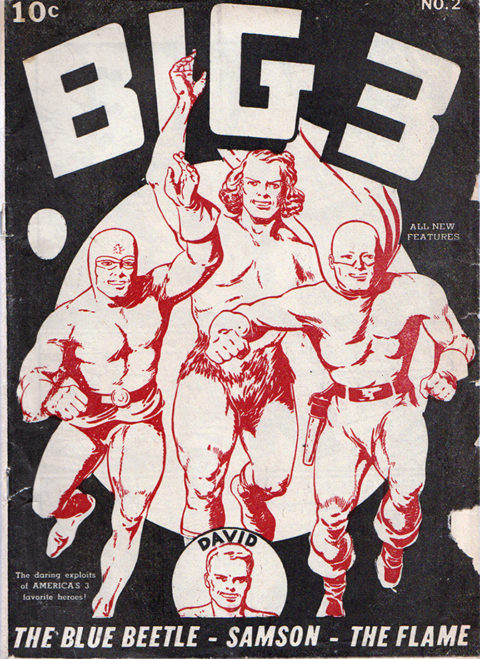
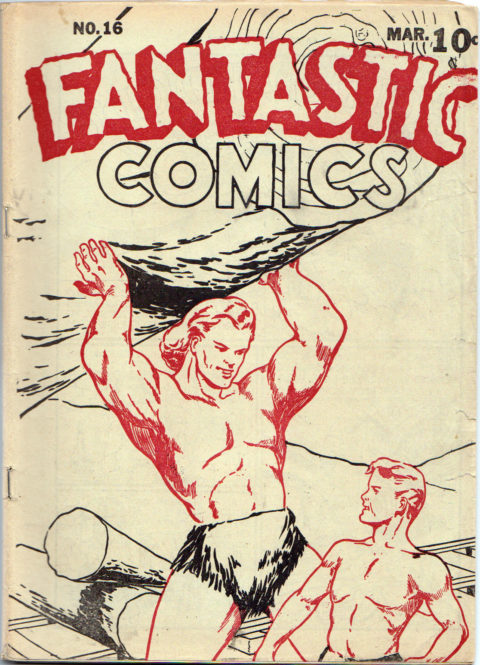
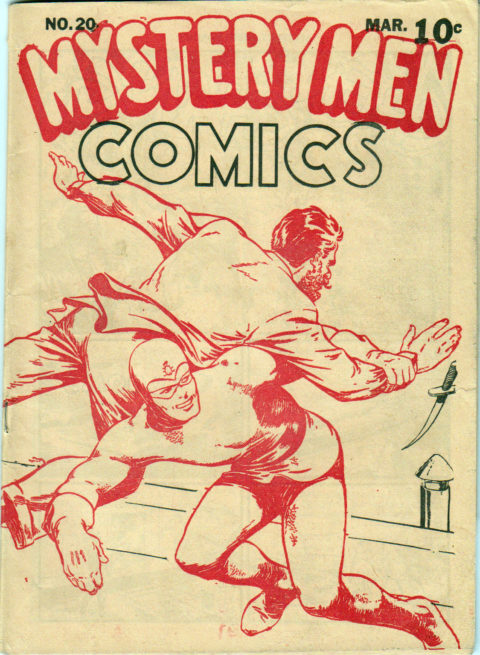
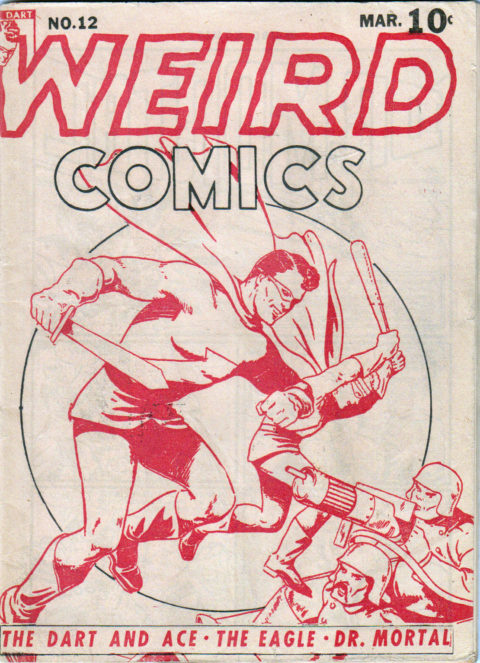
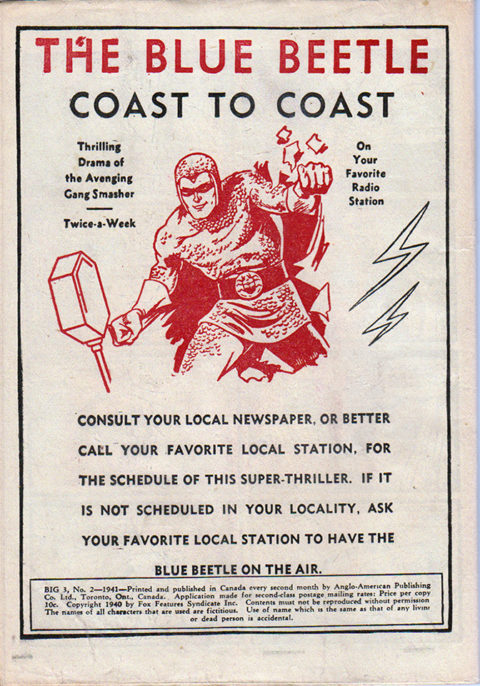
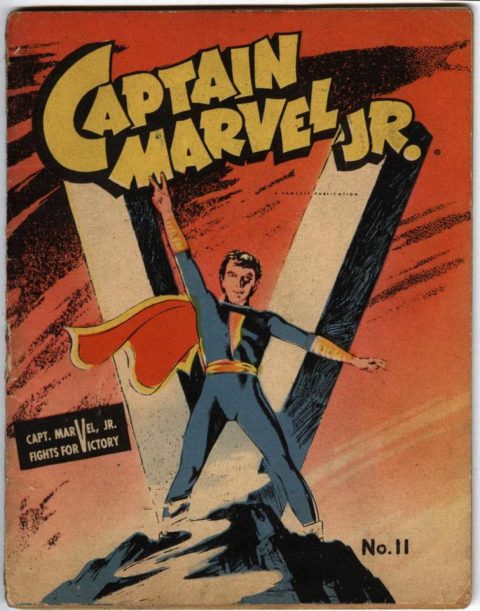
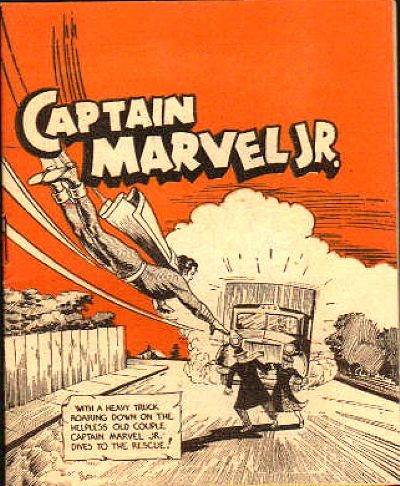
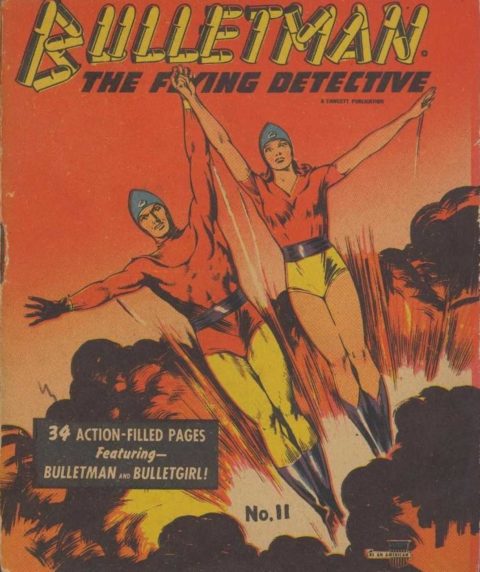
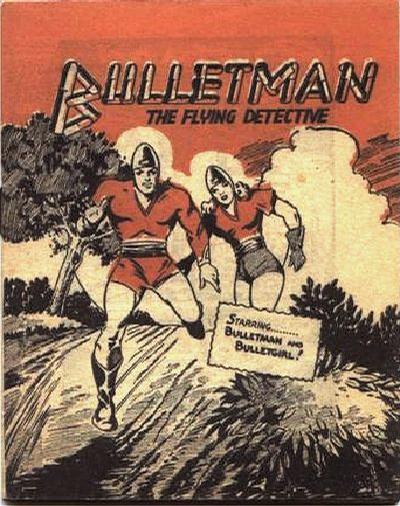
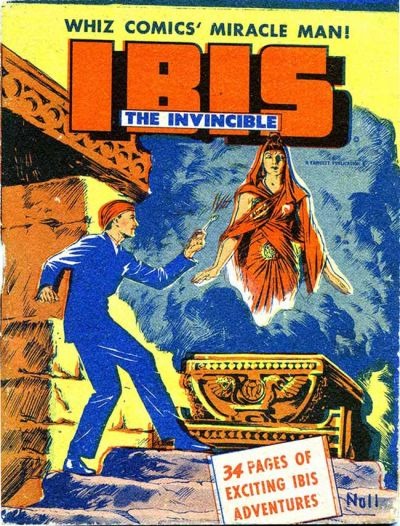
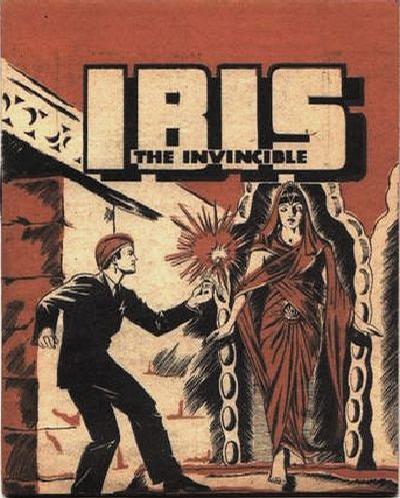
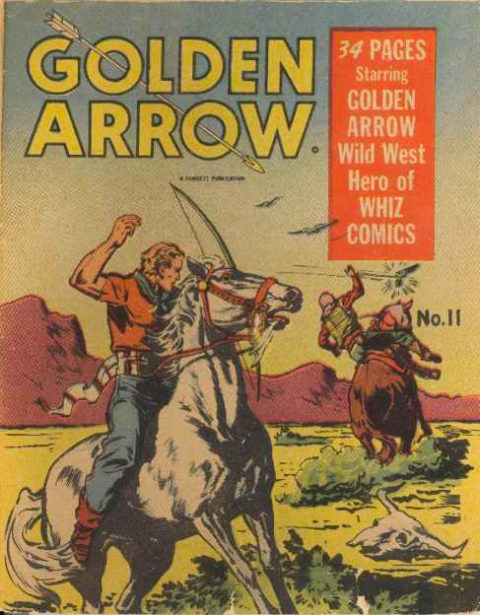
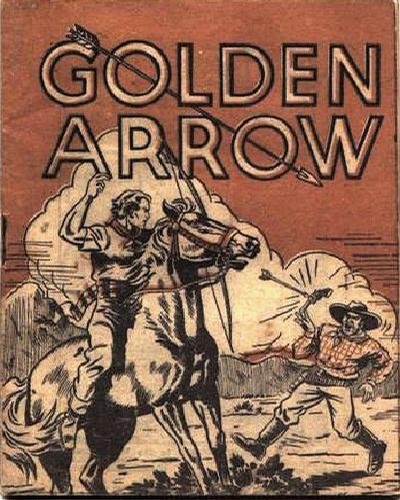
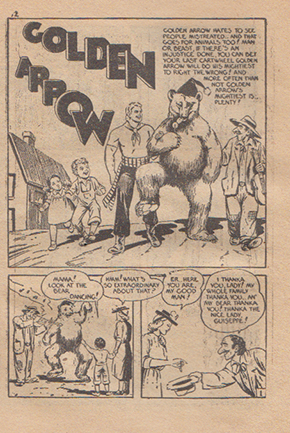
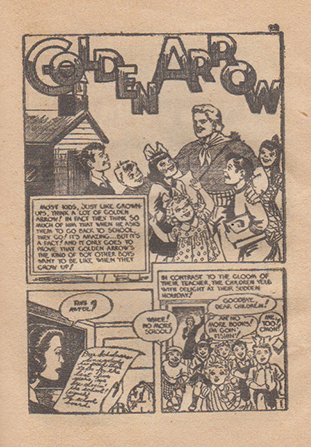

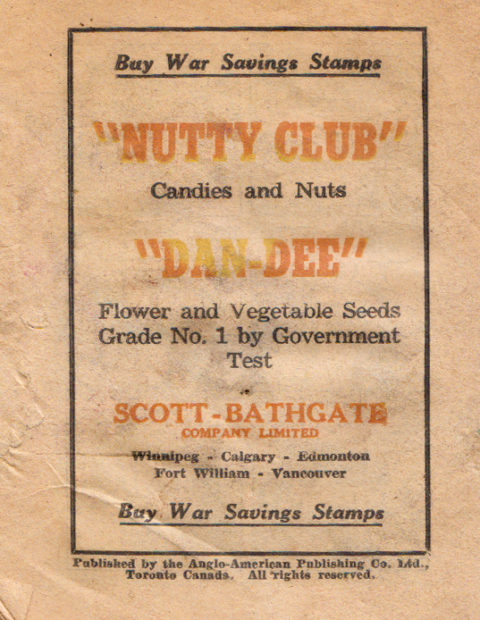
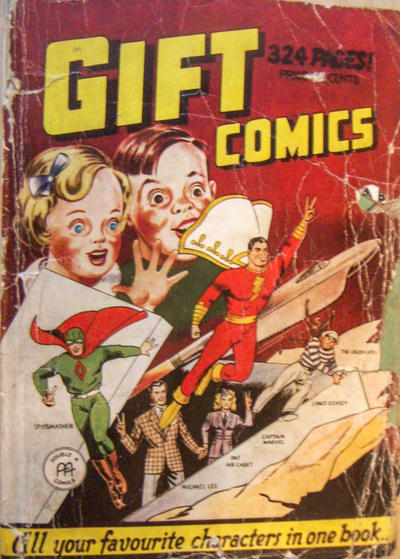
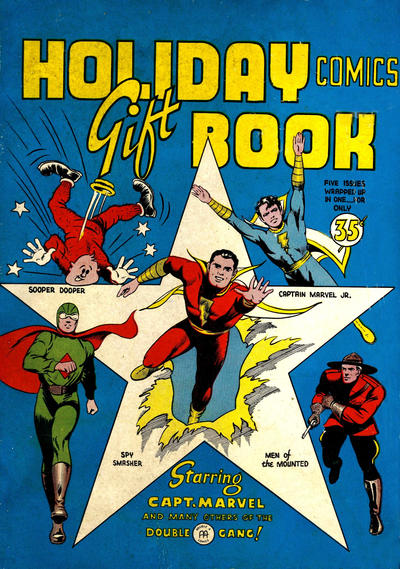
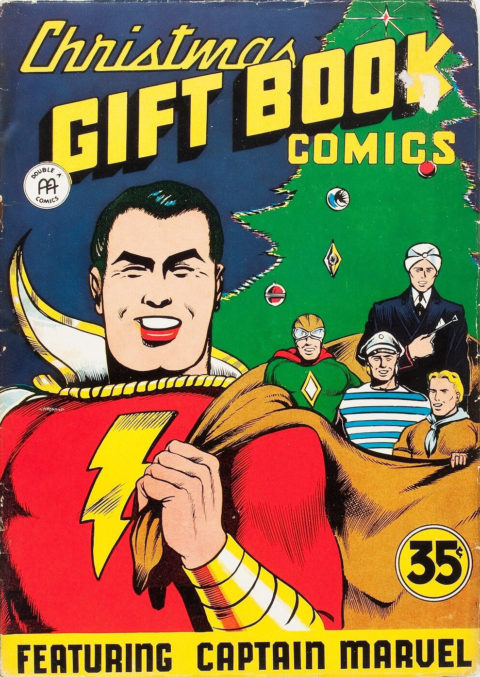



Another amazing WECA article, Ivan. It makes all WECA collectors want to go out looking for stuff. Someone local found a cache of goodies not that long ago. Wish it was me. Keep up the great articles, my friend.
The Gift Comics is not unnumbered. The indicia says Double-A Gift Book No. 1. Why they call it Gift Book inside and Gift Comics on the cover is a mystery.
Cool…more new information for me, more variants to look for. I just hope I don’t overlook them…the WECA mighty-midget comics is news to me. Have I overlooked these for years, after getting all the Fawcett issues? And those U.S. editions were badly printed themselves, making them somewhat unwanted even in today’s hot markets. I see them all the time in dealer boxes…now I will look at each one.
Those giant Gift comics would be fun, filled with WECA books. Yes!
What did Hignell Printing and Scott-Bathgate say when you asked if they had archive or file copies in their old dusty file cabinets? It’s neat they’re still in business sooo not out of the realm of possibility and both companies were headquartered in Winnipeg.
And more mystery – who created and drew the Snooper comic? Somebody in the known WECA brigade of artists or an unknown commercial artist? It’s copyrighted by Hignell. Cool oddity. Ditto the GIFT comic assemblages.
Yes, Tony, agree with you, I want to go to the comic expo and look for WECA! Got my first one a few weeks ago – Grand Slam Three Aces #50. Have to wait until April. : (
Ivan, were you a history teacher? You seem to have a way of putting things together. Nice mysteries you’ve uncovered here.
A WECA phone app would be handy. Not sure my phone would hold all these pictures of things I need to remember. A new comic shop a block away opens tomorrow so I’ll be there to see if they have any Canadian comics.
Hey, Bud, if you find duplicates in your searching let me know : )
Tony, thanks for spotting the difference between the indicia and the cover of the Gift Comics/Book issue and bringing that to our attention. Bud, you’ve got that American Con market that is relatively untapped by us Canadians. All these Anglo-American books that were distributed below the border must still show up at them and I’m sure that many of the black-and-white books still show up in border states. I still wonder why the Fawcett completists and collectors aren’t chasing the Capt. Marvel related redraws more. Tom, you’re out west. Get out to those HIgnell and Scott-Bathgate warehouses and see if there’s a stack of those “Fun in the Forest” books in some back corner. I have no idea who drew Snooper. It doesn’t look like any of the Anglo artist’s work. All you guys, I hope we get to meet up somewhere, someday and have a good gabfest about these comics in the future. We do need to have that small conference focused on Canadian war time comics somewhere and sometime and make that happen.
Ivan, I will email the companies this week with a screen grab of Snooper and post the result. The mighty-midget editions are really interesting, an odd format that had to be redrawn for Canadian printing.
98% toys, 1970’s vintage to newer at the new shop. Very small section of new comics, no bins, no old Canadian comics. Poop : (
WECA conference could be fun, where’s the best place for everyone to get to?
No response yet from emails sent last Tuesday to Hignell and Scott-Bathgate. Only sent to contact on their website. Maybe a letter?
Ivan, you must be feeling the way Robert Overstreet did when he started working on his guide and discovering all the great unknown treasures of the past.
What are the copyrights on a lot of these comics? I would love to see some as poster art!
Hi gang! Here’s a response this morning from Charles Smadella of Unigraphics/Hignell about my inquiry into Snooper:
__________________
Good afternoon Tim,
I hope your day is going well.
Thanks so much for your email, it was a good read and I loved looking at the link.
I am familiar with the recent reprints of Nelvana of the Northern Lights, Johnny Canuck etc. (through Hope Nicholson)
So the project is definitely close to my heart.
In the mid 90’s Hignell joined up with a group of other printing companies.
In the 5-8 years that followed all those companies merged here in our building on 488 Burnell St.
That meant a lot of excess equipment, archives etc had to be thrown away to make use of the space for the future.
That job would have been set up as artwork with separations and then shot on camera, where the plates would have been used to print the job.
Unfortunately our latest job archives go back to about the mid nineties, we never reprinted that book later on.
I am interested to know if there is a full PDF scan of that book, or if its just those pages??
Either way I would love to see about getting a copy of that to recreate it for our own archives here at Hignell/Unigraphics.
Let me know your thoughts on this I am very interested in talking about it further and helping you out in any way that I can.
Have a great day!
Charles Smadella
Prepress, Digital Colour
Unigraphics/Hignell Book Printing Ltd.
____________________
I’ve responded that we’ll keep him apprised of the mystery and invited him to join us here. Still waiting to hear from Scott-Bathgate.
On another note, seeing more of what Ivan puts up each month, I’m more excited for the cover art book that hopefully comes to fruition.
A nice try anyway Tim, I’m glad to see that you got a response, even if it wasn’t a positive result.
I tried the same with a letter to Archie Comics years ago, about the Bell Features reprints, & only got a fan club membership kit from their ‘direct sales’ mgr as they had no old records they could find at the time.
I guess that we’ll have to educate companies like this to work with libraries for their archives instead of just having materials ‘thrown out.’
~jim_b.
thanks, jim_b. I guess the next step would be legwork, and ads, to find descendants of the people who worked at Hignell at the time to see if anyone remembers. Snooper reminds me of the little booklets I saw sometimes in antique stores. I’ll have to check out my local antique mall.
Just checked back in to this column and saw the great detective work you’d done concerning Hignell. Active Jim is the owner of the Snooper book and I’m sure he could arrange to have a good scan of the complete book for Charles. I’m also glad to see that jim_b is still lurking here. He is a great font of information about these war time comics.
Thanks, Ivan! It was a little step. Should I post Charles’ business email address here for Active Jim? It’d be a nice gesture and who knows what else Hignell printed over the decades.
I can do it this way. For Active Jim, if you want to get in touch with Charles about the Snooper comic:
charles(at)unigraphics(dot)mb(dot)ca
Lurking? Me, Ivan, no (pause) that’s so pedestrian.
I’m spelunking, it’s much more fun y’know.